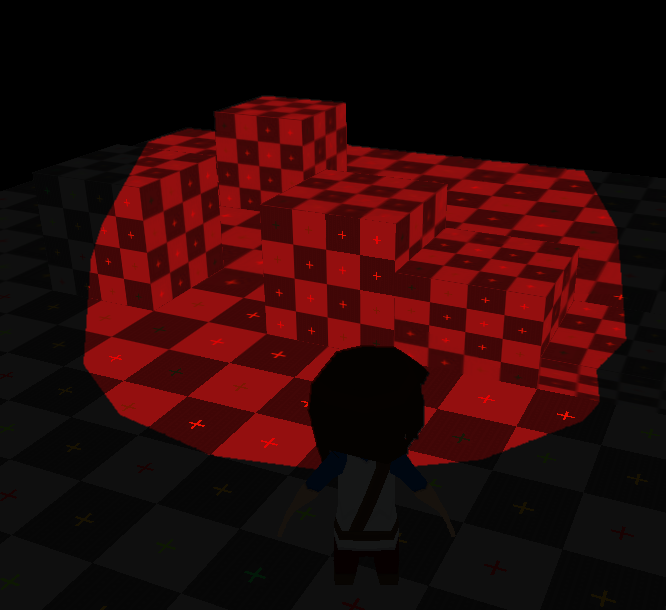I'm trying to implement it without using a normal buffer. In theory this would work well for the toon-shaded game I'm making, except I've run into a problem.
[color=#4A4A4A]
When I render a pointlight (as a sphere) in the lighting pass, I'm sampling from the depth-map and comparing the sphere's depth.[color=#4A4A4A]
Clipping any pixels from drawing where the scene is closer to the camera then the light. This sadly only works for one side of the point-light
[font="'Segoe UI"][size="2"][color="#4a4a4a"]BTW: I'm using XNA, but that's irrelevant to this problem... [/font]
[color=#4A4A4A]
VertexShaderOutput VertexShaderFunction(VertexShaderInput input)
{
VertexShaderOutput output;
float4 worldPosition = mul(input.Position, World);
float4 viewPosition = mul(worldPosition, View);
output.Position = mul(viewPosition, Projection);
output.Depth = 1 - (viewPosition.z / viewPosition.w);
return output;
}
float4 PixelShaderFunction(VertexShaderOutput input, float2 screenSpace : VPOS ) : COLOR0
{
screenSpace /= float2(1280, 720);
float depth = tex2D(Depth, screenSpace);
clip(depth < input.Depth ? -1:1);
return LightColor;
}
[color=#4A4A4A]
When I render with this code, the clip function works as expected, but I don't know how to clip the sphere from lighting parts of the scene that are behind it, beyond it's reach.
Here's a pic showing that the depth behind the sphere isn't being taken into account:
The farthest cube shouldn't be receiving any light, and the plane shouldn't be shaded that mush in the rear.

Here's another picture showing the problem a bit more visibly. Top is the final image, bottom is the light buffer:

I think I'm just missing the last step for determining the influence the light has, but I just can't figure it out!
Any help would be greatly appreciated.






